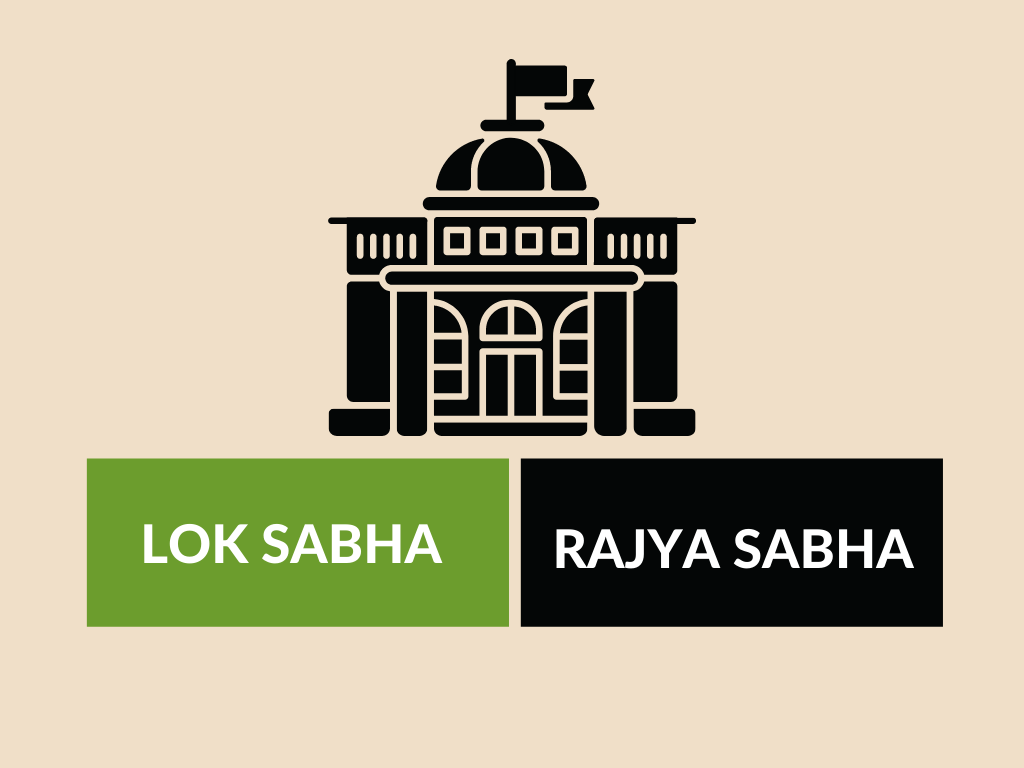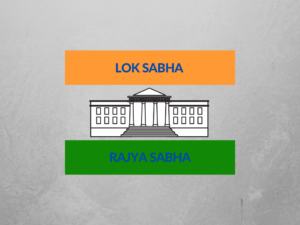PARLIAMENT
Parliament is the head legislative body of India. It occupies a significant position in the country’s constitutional set-up. The Constitution of India divided Parliament as consisting of the President and two Houses known as the Rajya Sabha (Council of States) and the Lok Sabha (House of the People). The President of India is the head of the Parliament and The Constitution of India came into force on January 26, 1950, from then on India is celebrating independence day on 26 January.
LOK SABHA
Lok Sabha is known as Lower House of Parliament.Lok Sabha is called as ‘House of People’ because it is composed of representatives of people who are elected by the voters in the country. The maximum strength of the Lok Sabha is 552 members in which up to 530 members represent different states, up to 20 members represent the Union Territories and 2 members which are nominated by the President of India represent Anglo- Indian community.
The Speaker of Lok Sabha is the guardian of the rights and privileges of the House, its Committees, and members. the Speaker represents its collective voice of Lok Sabha and acts as a communicator of decisions taken by the house to the outside individuals and authorities.
The Lok Sabha operates for 5 years from the date of its first meeting and after completion of 5 years the house is dissolved and elections are conducted again to form the Lok Sabha. In some emergency cases, Lok Sabha is dissolved before completion of 5 years.
RAJYA SABHA
The Rajya Sabha originated in 1919 by the pursuance of Government of India Act, 1919. Rajya Sabha is known as Upper House of Parliament. Rajya Sabha is known as ‘Council Of States” because it is composed of representatives which are elected by the elected representatives of Assemblies of state and union territories.
The maximum strength of Rajya Sabha is 250 members in which up to 238 members are the representatives of assemblies of state and union territories and 12 members are nominated by the President the persons who are having special knowledge and practical experience in matters including literature, science, art or social service.
The Rajya Sabha is the permanent body and is not subjected to dissolution. The one-third population of members of Rajya Sabha retire every two years and are replaced with newly elected members. Rajya Sabha enjoys certain special powers under the constitution.
COMPARISON TABLE
| LOK SABHA | RAJYA SABHA |
|---|---|
| The Lok Sabha consists of 552 members which are elected representatives of the people. | The Rajya Sabha consists of 250 members which are elected by the elected representatives of States and Union Territories. |
| Leader | |
| The Prime Minister functions as the Leader of the House in the Lok Sabha. | The Vice President of India acts as chairman of the Rajya Sabha. |
| Duration | |
| The Lok Sabha operates for 5 years from the date it is appointed and is dissolved after 5 years. | The Rajya Sabha is a permanent body and doesn't have a dissolution. |
| Qualifying Age | |
| To become a member of Lok Sabha, The qualifying age is 25 years. | To become a member of Rajya Sabha, The qualifying age is 30 years. |
| Tenure of Members | |
| The maximum tenure of members of the Lok Sabha is 5 years only. | The maximum tenure of members of the Rajya Sabha is 6 years. |
| Powers | |
| The Lok Sabha is having supreme powers in money and financial matters related to the budget. | The Rajya Sabha is having a role in discussing only after the bill is passed in Lok Sabha. |
| Power of Speaker | |
| The Speaker of Lok Sabha enjoys wide authority and powers under the Constitution and the Rules. | The Chairperson of the Rajya Sabha also enjoys powers as of speaker of Lok Sabha, anyway, there are some limitations. |
CONCLUSION
Disagreement between the two Houses on various amendments to a Bill is resolved by both the houses meeting in a joint sitting and resolutions are decided by majority vote. But it also has some exceptions like this provision of joint sitting does not apply to Money Bills and Constitution Amendment Bills. All matters which are related to legislation demands consent and approval from both the houses of the parliament.





